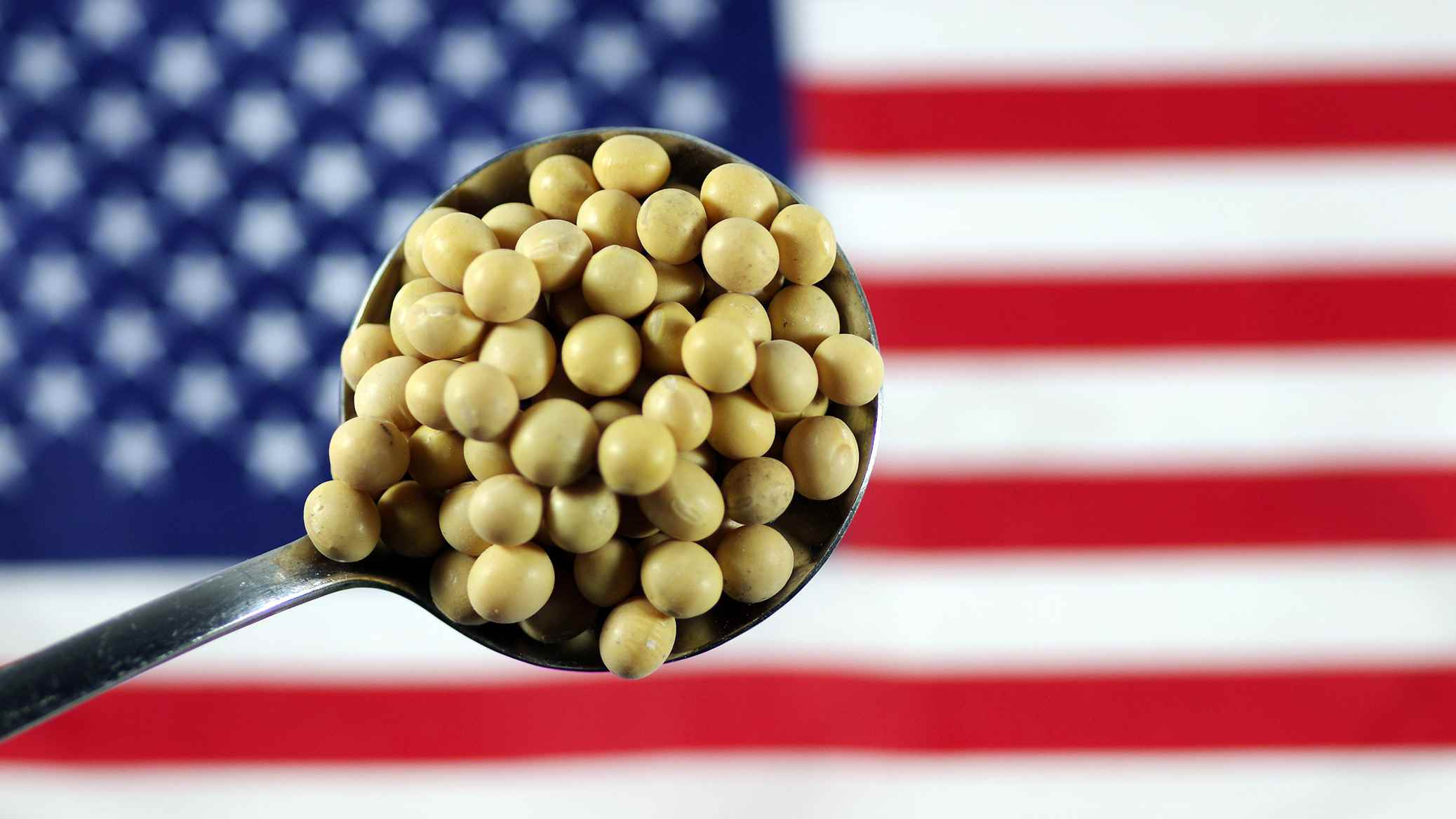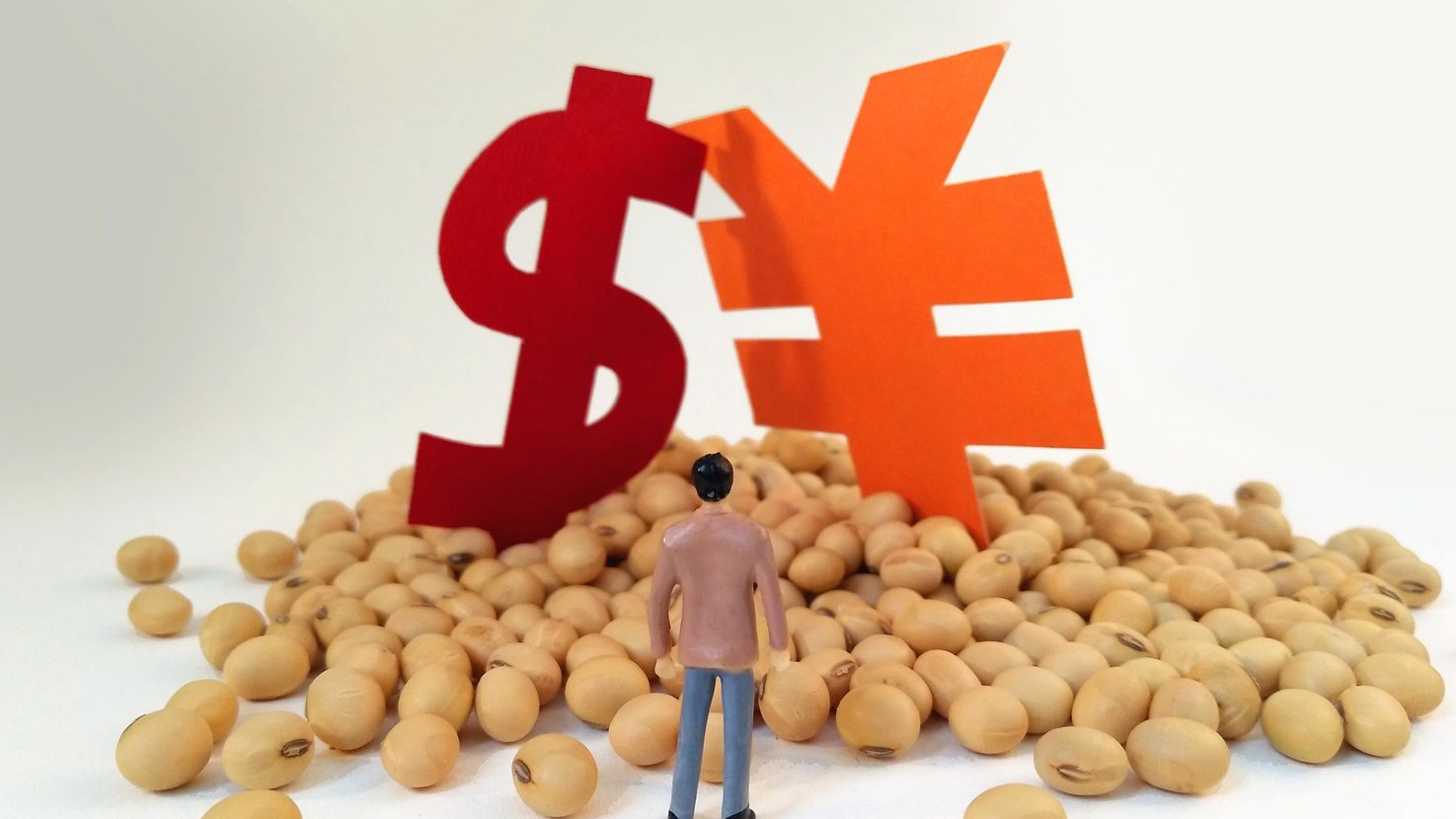
Business
22:45, 23-Oct-2018
US farmers see crops piling up as trade frictions continue
Updated
22:24, 26-Oct-2018
CGTN

American farmers have a long, cold winter to digest their options and see crops piling up as trade frictions continue.
Sales of soybeans to China in 2018 are already down 24.6 percent, according to US Department of Agriculture (USDA) statistics released last week.
An Iowa State University study last month said Hawkeye farmers alone would lose 2.2 billion US dollars from the trade war, with corn and soybeans dominating field crop output.
"We're getting hit on both ends by the trade war," Montana farmer Matt Flikkema told Xinhua. "Not only are the prices of our crops dropping but we're also paying more for equipment due to the tariff on steel and aluminum."
Wheat, corn and soy prices have fallen across the board since the trade war began early this year; soy fell by more than 12 percent in recent weeks.
Most farmers across the country oppose the trade war started by the United States with China, and view the Trump administration's 12-billion-US-dollar bailout as a band aid on an industry getting blasted by billions in lost revenues, with future profits in jeopardy.

VCG Photo
VCG Photo
Stagnant soy
In 2017, China, the world's largest soybean customer, bought 12.3 billion US dollars worth of the 21.5-billion-US-dollar soy export market, according to the USDA.
"The situation for soy farmers doesn't look very promising," Montana State University (MSU) economist Anton Bekkerman said Monday, as a prolonged trade friction is expected.
Industry insiders told Xinhua that China cannot wait, needing grains for its livestock needs, and is inking deals with Brazilian farmers and seeking other international players to replace the lost American import.
Even worse, in America's heartland, soy storage facilities are overflowing with soy that has nowhere to go.
"The problem is that the loss of China's market has fractured the US export supply chain for grains and oilseeds," Vincent Smith, a 30-year agro-economics professor at MSU, told Xinhua, stressing that the "lack of access to China's markets is causing delays in moving soybeans."
Ironically, good weather has exacerbated the excess. In August, the USDA predicted that soy, corn and wheat harvests would reach record yields in 2018, due primarily to favorable growing conditions.
In the next few months, US soy farmers will become more and more desperate to empty their vaults, industry insiders told Xinhua.
Disinformation
Recent messages and information from the White House have farmers stunned.
Last month, US President Donald Trump claimed that "soybeans are going up," and "we've had very little hurt," causing consternation in farming circles.
The US president has consistently blamed "terrible trade deals" as the cause of falling farm revenue, a fact refuted by both farmers and economists.
"Trump's link between trade deals and falling prices is misplaced," said Politifact, a nonprofit project operated by the Poynter Institute in Florida, noting that soybean prices have fallen since 2012 and the main driver has been weather, like drought.
"Lower supply led to higher prices. Good weather followed, which boosted yields and pushed prices down," it noted.
Both Smith and Bekkerman, leading agro-economists, agree that "fair, free trade" is the blueprint for a "win-win" outcome for both countries.
"We need a trade deal with China," Smith said. "Not only is this foolish tit-for-tat exchange going nowhere, but it is hurting the American farmer across the board."
American farmers believe officials in Beijing are moving demand to South America and away from the United States, a trend that could be permanent.
"It takes a great deal of time to establish, develop, and maintain these trade relationships," Bekkerman said, adding "they may not come back."
Source(s): Xinhua News Agency

SITEMAP
Copyright © 2018 CGTN. Beijing ICP prepared NO.16065310-3
Copyright © 2018 CGTN. Beijing ICP prepared NO.16065310-3